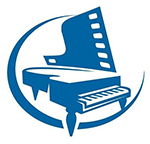In last week’s post, I discussed the many possibilities that offering multiple recitals per year can add to the quality and interest in your studio. This week, I would like to offer just some of the ideas for creative programming. Expanding your horizons both in repertoire and themes can offer endless possibilities! Like all things in the Arts, advanced planning is required to design and expand your recital offerings. In my studio, I offer three programs per year. The February program is always set to allow students the opportunity to play their repertoire offerings they will be perform at both state and local festivals in North Carolina. In this program, students may actually play up to four pieces depending on their participation in area festivals. To keep the program to a reasonable length I offer three back to back, one hour programs to ensure students can play all their repertoire. This makes the February programs the largest and most expansive of the school year.
During the summer months, I try to plan something differently for the late fall program. Below are just a few themes I have used in recent years:
- The Composer Recital
A few years ago, our studio selected Schumann as our featured composer. During the summer months, my intermediate students each played two selections from the Album for the Young, Op. 68. The more advanced students played two selections each from Kinderscenen. With advanced planning we were able to play the entire set as a complete work. Students sat in concert order in the front and just quickly switched pianists to give the audience the feel of a complete performance of the work. This program left only my youngest students. They played at the beginning of the program age appropriate literature and the program was clearly divided between the earlier pieces and the Schumann selections. There are so many composers–Kabalevsky in particular offers early intermediate through advanced pieces that could cover almost everyone except the youngest beginners in your studio.
2. Set Programming
One of the most interesting programs can be ones where each student selects a composer and plays two to three pieces from a set or Opus of pieces. Composers with elementary repertoire are numerous. Bartok, Gurlitt, Kabalevsky, Reinagle, Czerny and Bach are but a few of the composers that can offer endless combinations of two or three piece sets. Not only does each student have his or her own composer, but by performing pieces in combination, the student is able to grow their focus and concentration. Sets can pave the way for eventually learning and playing longer and longer sets. This theme fits every level of student. More advanced students can play movements from a sonata or short combinations from more advanced Romantic sets. Many parents have told me how impressed the students were when they could play “their set” for relatives! They feel more grown up and more fluent as players when they have several selections to offer.
3. Period Recitals
The sky is the limit on period recitals! Not only do we effectively have almost five periods to choose from , students can add spice to the programming by dressing up in the period of the pieces. How about dressing as a composer being featured in the program? Another idea is for students to write out and speak a short biography of the composer. Short descriptions about the composition features of the pieces can also incorporate students the opportunity of practice public speaking.
4. Genre Programs
Sonatinas and Sonatas, Preludes, and Character Pieces offer just a few ideas for building a theme for your next recital. Building programs around unknown composers and gems could provide a wonderful afternoon of unknown literature! There are thousands of pieces that do not get the hearing they deserve.
These four plans could keep your studio busy for many years. These are just solo themes. What about the duets and multiple layouts that could include chamber music (even for beginners!). Next week I will explore the never ending area of duets, trios and chamber pieces. There’s enough music to warrant a separate post. Try to incorporate one of these themes during 2019 and 2020! Your families will really enjoy the variety or styles and opportunities your studio provides to bring a breadth of performance experience to their children!
